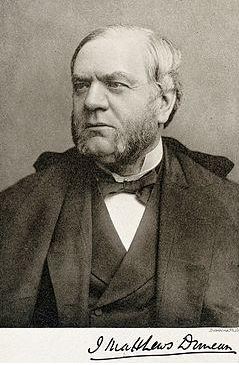 Latin adjectives mostly form regular comparatives and superlatives: for example, longus, longior, longissimus (long, longer, longest), a self-descriptive sequence; or sapiens, sapientior, sapientissimus (wise, wiser, wisest). But there are exceptions. The most striking is bonus, melior, optimus (good, better, best), which comes from three different roots. Others, less irregular, include magnus, maior, maximus (big, bigger, biggest), malus, peior, pessimus (bad, worse, worst), and parvus, minor, minimus (small, smaller, smallest).
Latin adjectives mostly form regular comparatives and superlatives: for example, longus, longior, longissimus (long, longer, longest), a self-descriptive sequence; or sapiens, sapientior, sapientissimus (wise, wiser, wisest). But there are exceptions. The most striking is bonus, melior, optimus (good, better, best), which comes from three different roots. Others, less irregular, include magnus, maior, maximus (big, bigger, biggest), malus, peior, pessimus (bad, worse, worst), and parvus, minor, minimus (small, smaller, smallest).
In Latin minimus meant the smallest or least important, the least amount, the lowest in rank, the latest born. And digitus minimus meant the smallest finger. The contracted form, “minimus”, an animal’s little finger or toe, first appeared in English in the late 19th century.

“Minimus” in English is also a shortened form of lupus minimus, “a form of chronic ulcerative disease of the vulva that is of limited extent” (OED). The dictionary gives only one example, from the 3rd edition of J M Duncan’s Clinical Lectures on Diseases of Women (1886). However, The BMJ contains an earlier example, in a report of a meeting of the Obstetrical Society of London on 25 May 1885 (pictures). When asked why he called it “lupus”, when the histology was different from that of proper lupus, Dr Duncan said that he did so because others had done so and referred to Charles West’s Diseases of Women (1857). But West had called it “lupus of the vulva” not lupus minimus”.

The BMJ reported a meeting of the same society on 6 June 1888. Dr R A Gibbons described cases of chronic metritis, endocervicitis, lupus minimus, caruncle of the urethra, and cancer of the uterus, and their treatment by electrolysis. In 1912 he also described cases of lupus minimus, one or more ulcers usually situated around the orifice of the vagina beyond the hymen, sometimes on the hymen itself. “These little ulcerations heal up with or without treatment, and break out in other parts. They are usually associated with little hypertrophies, such as hypertrophies of bits of the hymen or of the orifice of the urethra. [They] are exquisitely sensitive, and [can cause] dyspareunia … vaginismus … [and] pruritus.” He also described slightly larger ulcers at the posterior fourchette. “The size seems to depend on the amount of time the ulcer has been in existence, for the edges are apt to be slowly extended, but the growth in circumference is extremely slow.” He hypothesized that “many cases of pruritus have these small ulcerations as their starting point, leading to exposure of the terminal filaments of the sensory nerves distributed to the vulva and vagina.” He recommended searching for them carefully so that full treatment could be offered.
In 1885 Duncan also linked “lupus minimus” to another term, “esthiomene”, as if it was a synonym. Esthiomene, a gangrenous sore, came from the Greek ἐσθιόμενος, “eaten”, as in ὀδόντες ἐσθιόμενοι, decayed teeth. This awkward word (Duncan’s description) is, says the OED, obsolete. The dictionary gives only two examples, both from works by Robert Copland in around 1541.
However, the word is by no means obsolete. It has since appeared from time to time in medical publications, and still does. For example, in 1932, the President of the Section of Tropical Diseases and Parasitology of the Royal Society of Medicine gave an address titled “The history of the recognition of a new venereal disease, comprising climatic bubo, lymphogranuloma inguinale, esthiomène, chronic elephantiasis and ulceration of the vulva, the genito-ano-rectal syndrome, inflammatory stricture of the rectum”, referring to “a series of conditions often individually described under the terms elephantiasis vulvae, lupus vulva, syphilôme ano-rectal, inflammatory stricture of the rectum; or when they are associated, as the genito-ano-rectal syndrome, and with them elephantiasis of the male pudenda, [all of which] may be associated with the inguinal adenopathy of climatic bubo or lymphogranuloma inguinale.” Most recently, in a 2011 paper, “Cutaneous tuberculosis and esthiomene”, V Ramesh described it as “lymphatic obstruction occurring in the late stage of lymphogranuloma venereum, leading to vulval elephantiasis”, which is not the same as lupus minimus.
However, “lupus minimus” has disappeared from the medical record. It seems to have had minimal exposure as a technical term.
Jeffrey Aronson is a clinical pharmacologist, working in the Centre for Evidence Based Medicine in Oxford’s Nuffield Department of Primary Care Health Sciences. He is also president emeritus of the British Pharmacological Society.
Competing interests: None declared.
